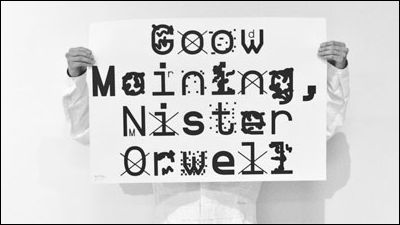Experts explain what 'technology to remove corrections such as mosaics' is
Technology that removes mosaics and blurs to sharpen images and videos has existed for a long time, but in recent years, it has made rapid progress with the development of AI and other technologies. Positive Security, a German security company, described this technology, which, when abused, can easily break through privacy and security protection.
Recovering redacted information from pixelated videos | Positive Security
Correction techniques can be broadly divided into two types: mosaic processing (upper left) and Gaussian blur (lower right). Of these, mosaic processing combines multiple pixels and uses the color of those pixels as the average value of the original pixels, and Gaussian blur uses the Gaussian function to blend the colors of the pixels to create an image. It is a technique to blur.
Of these, mosaic processing can be removed by brute force checking the 'combination of characters that will be the mosaic pattern of the processing result'. In the following article, you can see how Positive Security is actually using the mosaic removal tool 'Depix', which was given as an example of brute force restoration technology.

Brute force attack is based on the premise that credit card numbers and character strings are composed of fonts, but it is a technology that reproduces unprocessed images using an artificial intelligence algorithm that synthesizes human faces. With 'PULSE', you can also restore a face photo that has been reduced in resolution by mosaic processing to a high resolution.
Technology will be developed to increase the resolution of mosaic images by 64 times and produce images of extremely high quality --GIGAZINE

On the other hand, Gaussian blur can be broken through in the same process as mosaic processing by digitizing blurred characters. One example is the 2016 (PDF file) study of text restoration using a hidden Markov model . The hidden Morkov model is to 'probabilistically infer the next development of a certain state from the previous state', which was originally used in speech recognition, etc., but in the above research, it is applied to character strings. As a result, we succeeded in restoring Gaussian blur and mosaic of text with high accuracy.
![]()
Blurred images can be interpreted as just low resolution images, so they can be restored by increasing the resolution with AI as well as mosaics. In addition to the above-mentioned 'PULSE', ' TecoGAN ' announced by Technische Universität München is known as an AI that can break through mosaic processing with high accuracy.
![]()
In the case of video, the mosaic moves unlike the image, so there is also a method to remove the mosaic by taking advantage of that. Below is a simple diagram showing the principle. If you say, 'The image of the mosaiced text is just a little off to the right, but the gray pixel has moved to the left,' you can infer that the text is on the left edge of the original pixel.
Positive Security was actually able to capture the shaken mosaic footage and overlay the images in each frame to restore the text to the point where the number 'DE3000100000001272' was fairly clearly visible. This method was able to remove mosaics more effectively than existing mosaic removal tools such as
Based on these findings, Positive Security said, 'Creators and the press should be well aware of the risks of including modified sensitive information in their content and mosaic or blur it to be sufficiently coarse. A good way would be to fill it with a single opaque color. '
Related Posts:





